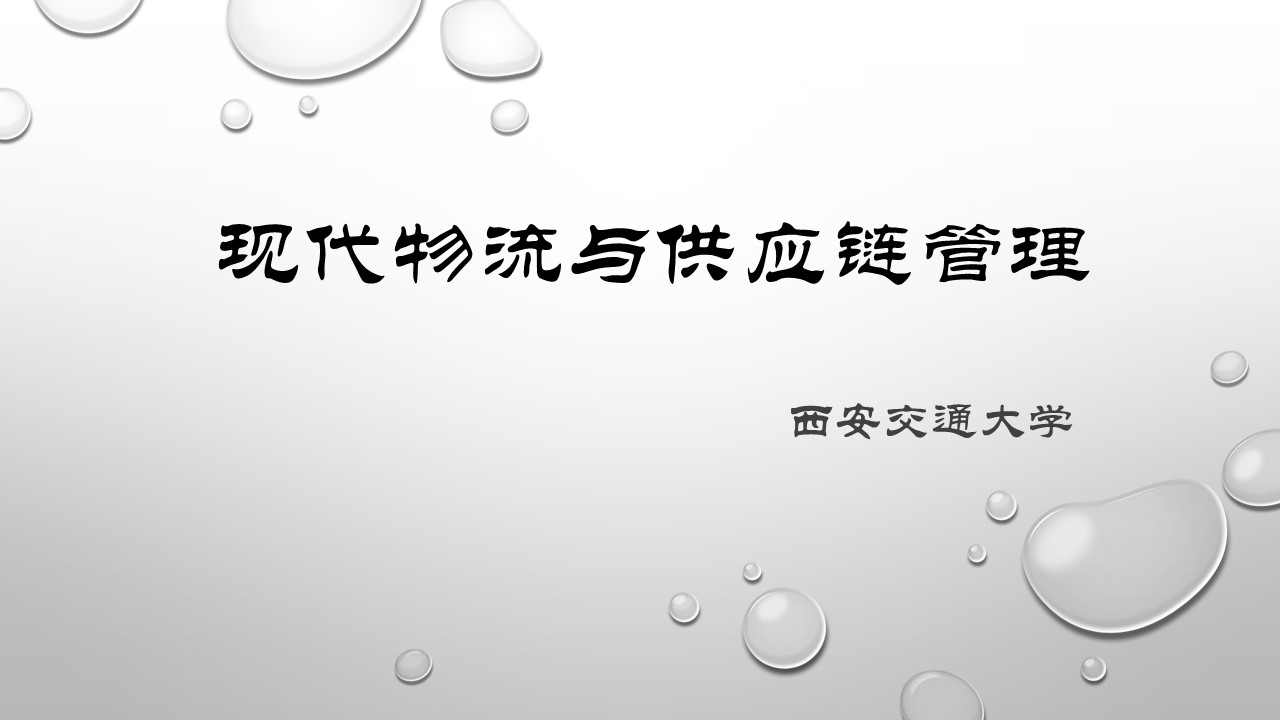
当前课程知识点:Diagnostics in Chinese Medicine > Week 7 Diagnosis methods: Observation (1) > 6.1.3 Observation of the appearance > 6.1.3 Observation of the appearance
返回《Diagnostics in Chinese Medicine》慕课在线视频课程列表
返回《Diagnostics in Chinese Medicine》慕课在线视频列表
同学们好
下面我们继续学习全身望诊之
望形体
望形 又称为望形体
是观察人形体的强弱胖瘦
体质形态和异常表现
等来诊察病情的方法
为什么望形体可以诊断疾病
中医认为五体合五脏
五体 是指人体筋 脉 肉 皮 骨
分别对应的是肝 心 脾 肺 肾 五脏
五体 有赖于五脏精气的充养
五脏精气盛衰和功能强弱变化时
又可以通过五体反映在外
形体的强弱与内脏功能的盛衰是统一的
一般内盛则外强
内衰则外弱
所以 望形体强弱胖瘦
可以了解内在脏腑的虚实 和气血的盛衰
而不同的体质形态
以及阴阳盛衰的不同
对疾病的易感性
和患病后疾病的转归是有所不同的
比如
素体阳盛者
患病易从阳化热
而素体阴盛者
患病易从阴化寒
所以 诊察病人的体质类型 有助于对疾病的诊断
望形体主要有三个内容
望形体强弱
望形体胖瘦
和望体质形态
下面我们就来逐一介绍
望形体的第一个内容 就是望形体的强弱
我们看下面这两张图
第一张图
这个人骨骼粗大
胸廓宽厚
肌肉充实
皮肤润泽
筋强力壮
是个体强的人
表明了五脏六腑的气血强盛
这种人
通常抗病力强 不容易生病
即使生病之后 也容易治疗 预后是比较好的
与之相对应的另外一张图
就是一个
骨骼细小
胸廓狭窄 肌肉瘦削 皮肤枯槁
筋弱无力的体弱的病人
这种人通常五脏六腑的气血不足
抗病能力相对较弱
非常容易患病
如果生病了 也比较难治疗 预后是比较差的
这是望形体第一个内容
望形体的强弱
望形体的第二个内容 就是望形体的胖瘦
首先我们来思考一下
到底人是胖好
还是瘦好
有些人想胖
有些人想瘦
所以 有的人会说 胖一点好
有的人也会说 瘦一点好
到底是胖好还是瘦好
比如 我们看这张照片
比较胖的举重运动员
身体好不好呢
很显然 他的身体是好的
而体操运动员
身体要瘦
这样好不好呢
很显然
她的身体也是好的
到底胖和瘦
如何判断它的好和不好呢
其实主要判断的标准 就是
不论胖和瘦
只要他精力充沛
神旺有力
就可以表明
他五脏六腑的气血是旺盛的
都是属于正常的表现
但是
如果胖成这个样子
身体不仅胖
而且吃得很少
皮肤又松弛 神疲乏力
通常是属于阳气不足 水湿停聚在体内
所引起的痰湿体质
这种病人
容易感受痰饮湿邪
从而引起中风病
再看这一张图
如果瘦成这个样子
当然也不好
这种肌肉瘦削 骨骼显露
两颧潮红 皮肤干焦
是属于阴血不足 内有虚火的人
这种人容易患肺痨 也就是肺结核
还有一种瘦人 就是
大骨枯槁 大肉下陷
瘦成了皮包骨头
很显然
这种人五脏六腑的精气是衰竭的
气液干枯 这是一种病重的病人
望形体的第三个内容 就是望体质形态
体质 是个体在生长发育过程中形成的
形体结构与机能方面的特殊性
体质在一定程度上是反映机体的阴阳气血盛衰
禀赋特征和对疾病的易感性
不同体质的人
得病后的转归
也有所不一样
所以 观察病人的体质形态
是有助于了解病人阴阳气血的盛衰
预测疾病的发展转归
可以作为临床治疗的一个参考
中医目前一般主张 将人的体质分为
阳脏人 阴脏人和阴阳平和人三大类
阴脏人
体型偏于矮胖
他的体质特征是阳弱而阴旺
疾病容易从阴化寒 导致寒湿内停
所以这种阴脏人的体质 通常是属于气虚
痰湿内停的 胖人的体质
所以又称为
肥人多痰湿
阳脏人 体型偏于瘦长
他的体质特征是阴亏阳旺
疾病容易从阳化热
导致伤阴伤津
所以这种阳脏人的体质
通常是阴虚火旺的瘦人体质
所以又称“瘦人多火”
还有一种人 就是阴阳平和人
这是介于阳脏人和阴脏人之间
它的特征是阴阳平衡 气血调匀
通常这种阴阳平和人 在平时没有寒和热的喜恶
这是大多数人的体质类型
以上是我们学习全身望诊之望形的内容
本节课就讲到这里
-Introductory remark
--QQ groups、WeChat public account
-Introduction
--【Discussion 1】Why do you want to take this course?
-Unit test for Introduction
-1.1 Yin-yang theory
-1.2 The theory of five elements
--1.2.1 The theory of five elements
--1.2.2 Application of the theory of five elements
-Frequently Asked Questions
-Unit test for week 1
-2.0 Outline
--【Discussion 2】How to understand the holistic view centered on the Zang Fu theory?
-2.1 Liver
--【Discussion 3】Why is repose more important than vigorous exercise in recuperation for patients with
-2.2 Heart
-2.3 Spleen
-2.4 Lung
--2.4 Lung
-2.5 Kidney
-2.6 Six fu organs
-Frequently Asked Questions
-Unit test for week 2
-3.1 Qi
--3.1 Qi
-3.2 Blood
-3.3 Body fluid
-3.4 The relationship of qi, blood and body fluid
--3.4 The relationship of qi, blood and body fluid
--【Discussion 4】A discussion about the theory of qi, blood and body fluid
-Frequently Asked Questions
-Unit test for week 3
-4.0 Outline
-4.1 Six exogenous factors
--4.1.2 Nature and pathogenicity of wind and cold
--4.1.3 Nature and pathogenicity of summer heat and damp
--4.1.4 Nature and pathogenicity of dryness and fire
-4.2 Etiology of visceral impairment
--4.2 Etiology of visceral impairment
-Frequently Asked Questions
-Unit test for week 4
-5.0 Outline of inquiry
--【Discussion 5】If you were a patient, how would you describe your condition to your doctor first?
-5.1 Inquiry of Chills and fever
--5.1.1 Chills and fever(Aversion to cold with fever)
--5.1.2 Chills and fever(Chills without fever)
--5.1.3 Chills and fever(Fever without chills)
--5.1.4 Chills and fever(Alternative chills and fever)
--【Discussion 6】How to understand "if you have clinical manifestations of cold, that is exterior syndr
-5.2 Inquiry of perspiration
-Frequently Asked Questions
-Unit test for week 5
-5.3 Inquiring of pain
--【Discussion 7】How to understand "stagnation leading to pain and innourish leading to pain"?
-5.4 Inquiring of head, body, thorax and abdomen
--5.4 Inquiring of head, body, thorax and abdomen
-5.5 Inquiring of ears and eyes
--5.5 Inquiring of ears and eyes
-5.6 Inquiring of sleep
-5.7 Inquiring of food and drink, appetite and taste
--5.7 Inquiring of food and drink, appetite and taste
-5.8 Inquiring of defecation and urination
--5.8.1 Inquiring of defecation
--5.8.2 Inquiring of urination
-5.9 Inquiring of infantile and women's disease
--5.9 Inquiring of infantile and women's disease
-Unit test for week 6
-6.0 Outline of Observation
--【Discussion 8】Please use the whole body inspection (including the expression, complexion and figure)
-6.1.1 Observation of vitality
--6.1.1 Observation of vitality
-6.1.2 Observation of the color
--6.1.2.1 The content, principles of inspection of the color
--6.1.2.2 Indication of diseases by five colors
--【Discussion 9】How do you understand the normal complexion of a normal people?
-6.1.3 Observation of the appearance
--6.1.3 Observation of the appearance
-6.1.4 Observation of figure and posture
--6.1.4 Observation of figure and posture
-Unit test for week 7
-6.2.1 Observation of head and face
--6.2.1 Observation of head and face
-6.2.2 Observation of five sensory organs
--6.2.2.1Observation of five sensory organs(observation of eyes,ears,nose)
--6.2.2.2Observation of five sensory organs(observation of lips,teeth and gums,throat)
-6.2.3 Observation of body
-6.2.4 Observation of limbs
-6.2.5 Observation of two lower orifices
--6.2.5 Observation of two lower orifices
-6.2.6 Observation of skin
-6.3 Observation of excreta
-6.4 Observation of infantile fingerprints
--6.4 Observation of infantile fingerprints
-Frequently Asked Questions
-Unit test for week 8
-7.1 Outline of tongue inspection
--7.1.1 The morphology and structure of the tongue
--7.1.2 The principle of tongue examination
--7.1.3 The method and precaution of tongue examination
--7.1.4 The content of tongue examination, normal tongue
-7.2 Inspection of tongue structure
--7.2.1 Observe the color of tongue
--7.2.2 Observe the shape of tongue
--7.2.3 Observe the states of tongue
--7.2.4 Observation of sublingual vein
-7.3 Observation of tongue coating
--7.3.1 Observation of coating texture
--7.3.2 Observe the color of coating
-7.4 Clinical significance of tongue diagnosis
--7.4 Clinical significance of tongue diagnosis
--【Discussion 10】Why to observe the tongue can be used to diagnose disease?
-Unit test for week 9
-8.1 The principle of pulse examination
--8.1 The principle of pulse examination
-8.2 The regions and methods of pulse examination
--8.2 The regions and methods of pulse examination
-8.3 The elements of pulse examination and the normal pulse
--8.3 The elements of pulse examination and the normal pulse
-8.4 Characteristics and significance of pulse
--8.4.1 Superficial pulse, deep pulse, slow pulse, rapid pulse
--8.4.2 Surging pulse, thin pulse, long pulse, short pulse
--8.4.3 Feeble pulse, forceful pulse, slippery pulse, uneven
--8.4.4 Taut pulse, tense pulse,soggy pulse, moderate pulse
--8.4.5 Knotted, slow-regular-intermittent, irregularly abrupt
-8.5 Similar pulse, concurrent pulse, pulse indicating deterioration of visceral qi۞
--8.5 Similar pulse, concurrent pulse, pulse indicating deterioration of visceral qi۞
--【Discussion 11】Why is complex pulse more common than single-factor pulse?
-8.6 Women’s pulse, children’s pulse
--8.6 Women’s pulse, children’s pulse
-8.7 The clinical significance of pulse diagnosis
--8.7 The clinical significance of pulse diagnosis
-Unit test for week 10
-9.1 Listening
-9.2.1 Abnormal sound
-9.2.2 Abnormal language
-9.2.3 Respiratory abnormality
--9.2.3 Respiratory abnormality
-9.2.4 Cough
--【Discussion 12】How to observe the patient's cough sound and sputum changes to determine whether the
-9.2.5 Abnormal sounds of the stomach and intestines
--9.2.5 Abnormal sounds of the stomach and intestines
-9.3 Smelling
--【Discussion 13】How to diagnose by smelling?
-Unit test for week 11
-10.1 The method, meaning and precautions of palpation
--10.1 The method, meaning and precautions of palpation
-10.2 Contents of palpation
--10.2.1 Palpating chest and hypochondrium
--10.2.2 Palpating stomach and abdomen
--10.2.4 Palpating hands and feet, palpating acupoints
--【Discussion 14】How to determine whether external or internal injuries?
-Unit test for week 12
-Conclusion
-Final Exam
--Final Exam


